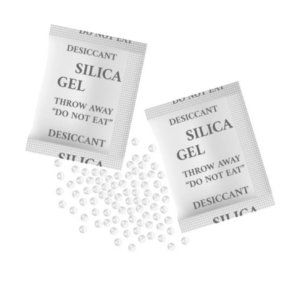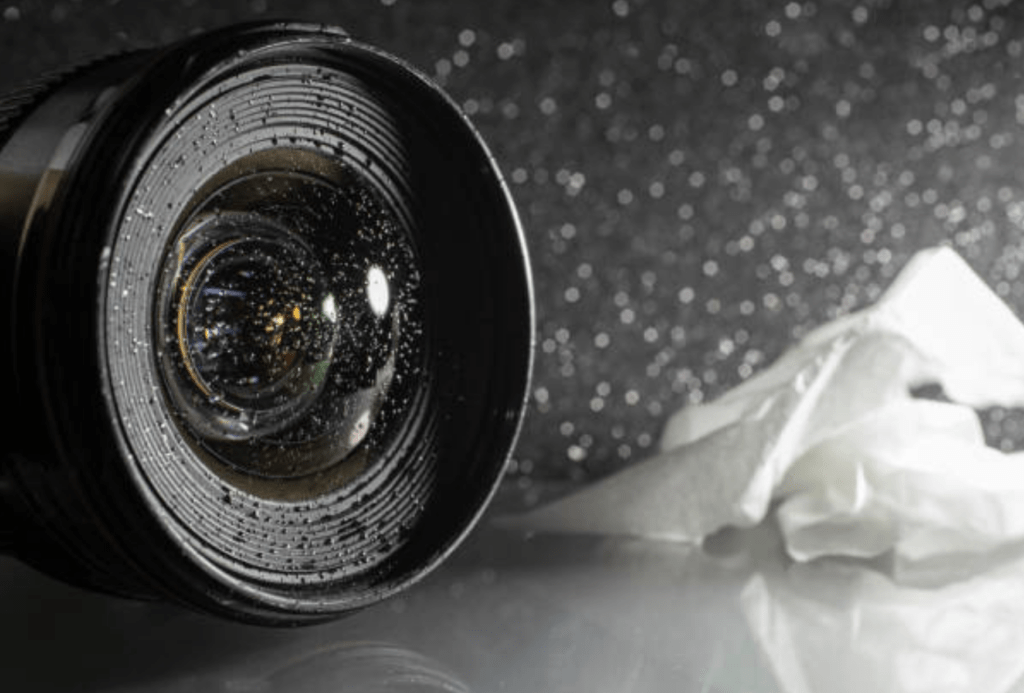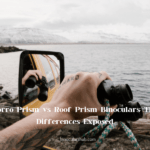Binoculars are invaluable tools for nature enthusiasts, bird watchers, and sports fans, providing a closer look at life around us. However, encountering the dreaded situation of water inside your binoculars can quickly turn a pleasant experience into a worrisome one. In this guide, we’ll walk you through the process of how to get water out of binoculars and offer tips on preventing future incidents.
How to Get Water Out of Binoculars in 5 Steps
1. Remove Batteries
The moment you notice water within the confines of your binoculars, time becomes of the essence. Swift action is paramount to minimize potential damage. Start by removing batteries if applicable and open all available slots to facilitate air circulation.
2. Disassemble Your Binoculars
The next critical step is the careful disassembly of your binoculars. Adhere to the manufacturer’s manual for disassembly, ensuring meticulous tracking of each component. This process is pivotal for effective drying, as it exposes all internal parts, allowing air to reach and expedite the evaporation of trapped moisture.
3. Remove the Excess Water
Gently wipe the surface of the binoculars with a soft, absorbent cloth to soak up as much water as possible. Avoid rubbing, as this may cause scratches on the glass lenses. Place the binoculars in an inverted position, allowing any accumulated water to drain out naturally.

4. Use a Desiccant
When moisture does find its way into your binoculars, using a desiccant like silica gel can help absorb the excess moisture.
Silica gel
When moisture enters binoculars, using a desiccant like silica gel helps absorb excess moisture. Silica gel packets are more effective than rice and prevent unwanted residue. Place the binoculars and desiccant in an airtight container to facilitate moisture removal.
Myth of Rice
In the realm of rescuing electronic devices from water damage, the rice myth has persisted for years. Contrary to popular belief, using rice isn’t the optimal solution for drying electronic devices, including binoculars. It can also leave behind residue, especially in the intricate parts of binoculars, which can further compromise their functionality.
5. Dry out your Binoculars
If your binoculars have been exposed to moisture, ensure a thorough drying process. Use gentle warm airflow, or natural air drying to prevent condensation. Avoid exposing them to direct heat sources, as excessive heat can damage internal components. You can use a hair dryer, a dehumidifier, or an air compressor.
What if these 5 Steps don’t work? Take Expert’s Help
When water damage is extensive or internal fogging persists, seeking professional help from optics experts is recommended. They can assess and address issues that may be challenging for users to resolve independently.
Water damage can be deceptive, often reaching internal components that are not immediately visible. Professional technicians have the expertise to disassemble binoculars meticulously, identifying and addressing any hidden moisture that might compromise the device’s functionality.
Moreover, professional services often come with a warranty or guarantees, providing added peace of mind to users concerned about the efficacy of the repair. While the initial cost may be higher than DIY attempts, the investment in professional help can save you from potential complications that may arise from incomplete or incorrect home remedies.
What Causes Binoculars to Get Wet?
Binoculars, despite their remarkable optical capabilities, are not impervious to moisture. Understanding the various causes of getting wet is essential for maintaining the longevity and functionality of these optical devices.
- Rain and Wet Weather: The most obvious culprit is rain. Sudden showers or persistent rainfall can expose your binoculars to water, potentially seeping into sensitive components.
- Humidity and Condensation: Even in non-rainy conditions, high humidity levels can contribute to condensation. Fog can accumulate on the lens, affecting visibility.
- Water Bodies and Splashes: If you’re near lakes, rivers, or oceans, splashes are inevitable. Accidental drops or water splashes from these bodies can impact the performance of your binoculars.
- Accidental Submersion: In more extreme scenarios, accidental submersion—whether falling into a body of water or being caught in a heavy wave—can pose a serious threat to the integrity of your optics.
Can Binoculars Get Wet?
The durability of binoculars in wet conditions varies depending on their design and features. The answer to whether binoculars can get wet lies in the waterproof or water-resistant capabilities specified by the manufacturer. Waterproof binoculars are tightly sealed, preventing water from entering even when submerged. Water-resistant binoculars offer varying degrees of protection against moisture, making them suitable for light rain or splashes.

What Happens When Binoculars Get Wet?
The consequences of allowing water to infiltrate your pair of binoculars can be profound, impacting both short-term functionality and long-term durability. Let’s delve into why water in binoculars is a cause for concern.
- Lens Damage: Water on binocular lenses can cause permanent damage. It might leave water spots, affect the lens coatings, or, in more severe cases, lead to irreversible optical distortions.
- Internal Fogging: Moisture inside the optics can result in internal fogging. This not only obstructs your view but also poses challenges in clearing the fog, impacting the overall user experience.
- Mold and Mildew: The combination of moisture and darkness within the optical housing creates an ideal environment for mold and mildew to thrive. These not only compromise performance but can also be challenging to remove.
- Mechanical Dysfunction: Water can seep into the internal mechanics, affecting moving parts and mechanisms within the binoculars. This can lead to difficulties in adjusting focus, zoom, or other essential functions that matter.
- Corrosion: Metal components within the binoculars are susceptible to corrosion when exposed to water and oxygen. Corrosion compromises the structural integrity and, consequently, the overall lifespan of the optics.
How to Prevent Moisture From Binoculars?
Proactive maintenance is crucial for preventing moisture and water entry into your binoculars. Here are some effective strategies to ensure the longevity of your optics.
Protective Covers
Investing in protective covers designed for specific binocular models can seal them away from rain, splashes, and dusty environments. Choose covers that snugly store your binoculars to ensure maximum exterior protection.
Proper Storing Techniques
When not in use, storing your binos in a sealed protective case in a dry and cool environment with low moisture content. Avoid leaving them exposed to direct sun light or extreme temperature variations.
Avoid Moisture Exposure
During usage, be mindful of surroundings. Minimize exposure to rain, water bodies, and splashes to prevent unnecessary moisture contact.
Antifogging Sprays or Creams
Applying antifogging sprays or creams designed for optics can help reduce internal fogging, enhancing visibility during humid conditions.
Choose Binoculars With Water Repellent Coatings
Opt for binoculars with advanced water repellent coatings on lenses. These coatings help repel water, ensuring clarity and preventing moisture-related issues.
Regular Maintenance
Regularly inspect your binoculars for signs of wear, damage, or loose components. Addressing issues promptly can prevent further damage and ensure optimal performance.
How to Use Binoculars Around Water?
Binocular enthusiasts often find themselves near water bodies, whether for birdwatching by the lake or enjoying marine activities. Using binoculars around water requires special considerations to protect them from potential water exposure.
Choose Floatable Binoculars
Opt for a new pair with floatable features. These are designed to stay afloat if accidentally dropped into water, minimizing the risk of submersion.
Use Floatable Straps
Attach floatable straps to your binoculars. These accessories not only make them easier to carry but also provide an additional layer of protection against accidental drops into water.
What is the Difference Between Fog proof and Waterproof Binoculars?
Fogproof binoculars are designed to resist internal fogging, ensuring clear vision even in temperature variations or humid conditions. This is achieved through the incorporation of features like argon dry gas purged or nitrogen purged. By replacing the air inside the optical tubes with inert gas, manufacturers eliminate internal moisture, preventing fogging and maintaining optical clarity. Investing in these binoculars can be advantageous, particularly if you frequently encounter temperature variations or humid environments.
Waterproof binoculars, on the other hand, are constructed to withstand exposure to water without compromising their functionality. These binoculars are tightly sealed to prevent water entry, making them suitable for use in rainy conditions or even submersion to a certain depth. The sealing prevents moisture from reaching the internal components, ensuring reliable performance in wet environments.



